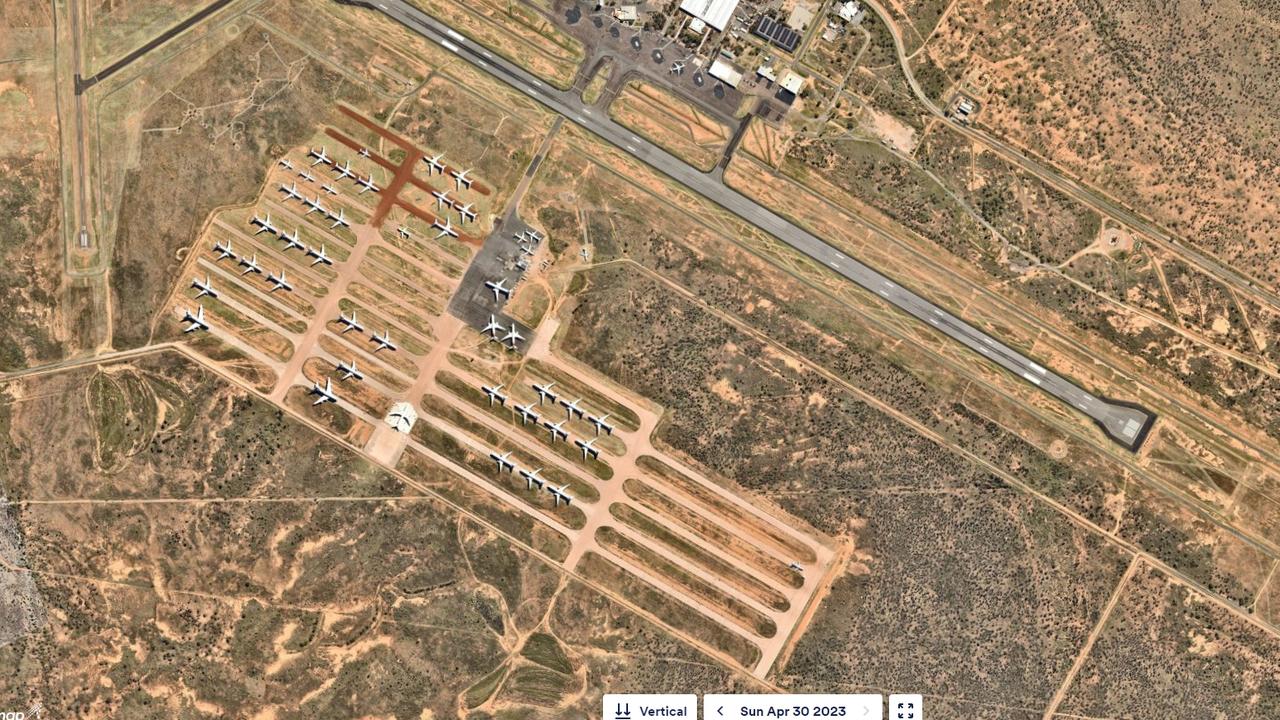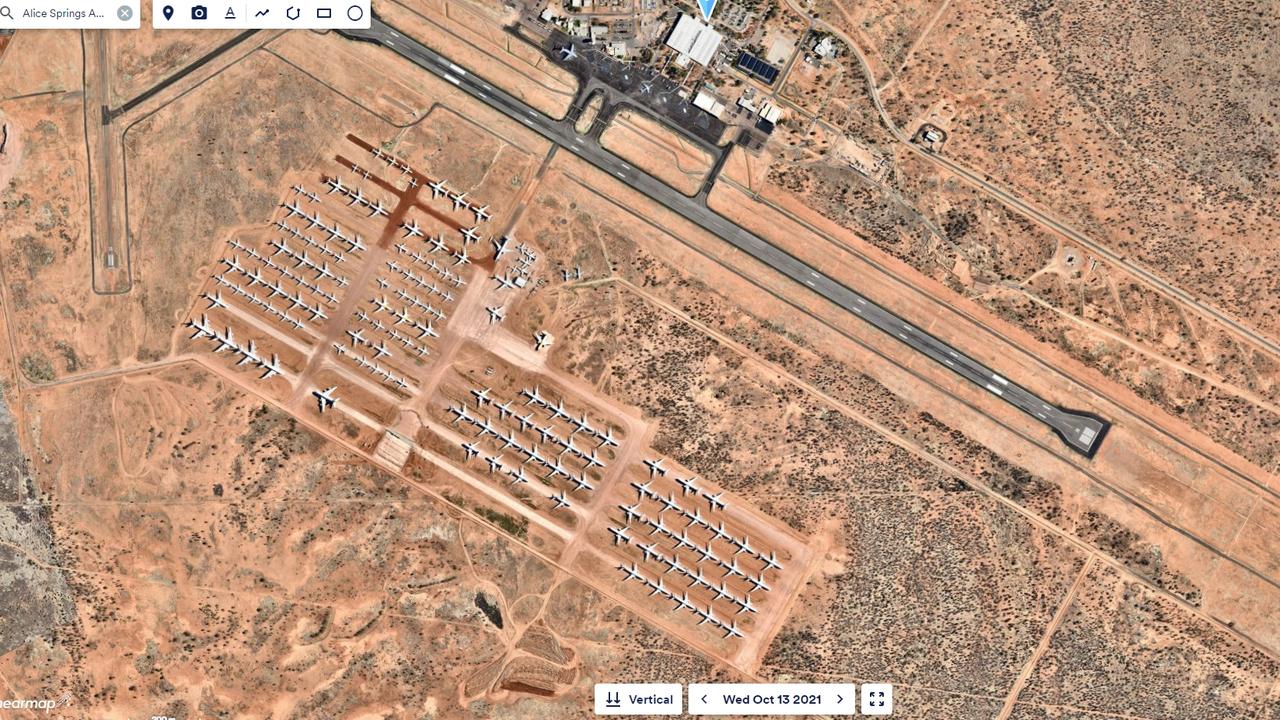Red Centre’s sea of planes drying up as airlines get back to business
At the peak of the Covid pandemic, 152 aircraft were parked in storage at Alice Springs. How many remain?

At the peak of the global Covid-19 pandemic, 152 aircraft were parked in Australia’s Red Centre as flying became a novelty rather than a normality.
Despite being established in 2014, Alice Springs’ Asia Pacific Aircraft Storage (APAS) had never seen such demand and managing director Tom Vincent fast tracked expansion plans.
Within months the equivalent of 26 rugby fields of plane parking was added, with every bay filled almost as soon as it was built.
Today, however, less than a third of those aeroplanes remain, 45 to be exact, and dozens of bays sit empty.
But Mr Vincent denied they were any less busy with his team in a constant cycle of reactivating aircraft that were returning to service, and parting out those that were not.
“There’s no doubt the pandemic created a big market for storage. We had 15 aircraft before March 2020,” he said.
“There’s been a bounce-back post-Covid but storage facilities existed long before the pandemic and will continue to be needed.”

Indeed, APAS is in the process of recruiting again, after seeing some of its Covid hires return to airlines that had little or no work for engineers during the pandemic.
Among the aircraft remaining at Alice Springs is a Singapore Airlines A380 and a couple of Boeing 777s; two Scoot A320s; and at least 20 Cathay Pacific Boeing 777s and A330s.
A number of other frames that found their way to APAS during Covid belonged to now defunct carriers NokScoot, Silk Air and Cathay Dragon.
Other airlines that made use of the site during Covid such as Cebu Pacific, Fiji and Thai Airways have put their aeroplanes back into service.
Mr Vincent said demand for storage going forward would be influenced by a range of market factors including fleet changes, production rates, leasing costs and oil prices.
In coming years, hundreds of aircraft are expected to be replaced with newer models after manufacturers suspended deliveries over the pandemic period.
In 2023 alone, Airbus aimed to deliver more than 700 aircraft and Boeing more than 500.
Qantas, Air India and Cathay Pacific are among the carriers in the region planning major fleet renewals, leaving existing planes to be parted out or returned to lessors.
With production ramping up and new aircraft sales accelerating, Mr Vincent is confident the expansion undertaken at APAS during the pandemic was justified.
“We’re very comfortable with how we’re positioned for the long term,” he said.
The facility was not the only one emptying out in the wake of Covid, with Victorville in California also seeing a sizeable turnover.
Qantas notably took its last A380 out of the “boneyard” earlier this year after almost 1000-days in storage, and last week Air New Zealand also bid farewell to the Mojave Desert.
The kiwi carrier’s chief operations officer Alex Marren said the last of four Boeing 777-300s had returned home “after 855 long and lonely days in the aeroplane graveyard”.
“An incredible amount of work has gone into bringing these aircraft back,” Ms Marren said. “The reanimation of one 777 alone has taken more than seven weeks and involved more than 1500 man-hours of work.”
Originally published as Red Centre’s sea of planes drying up as airlines get back to business









